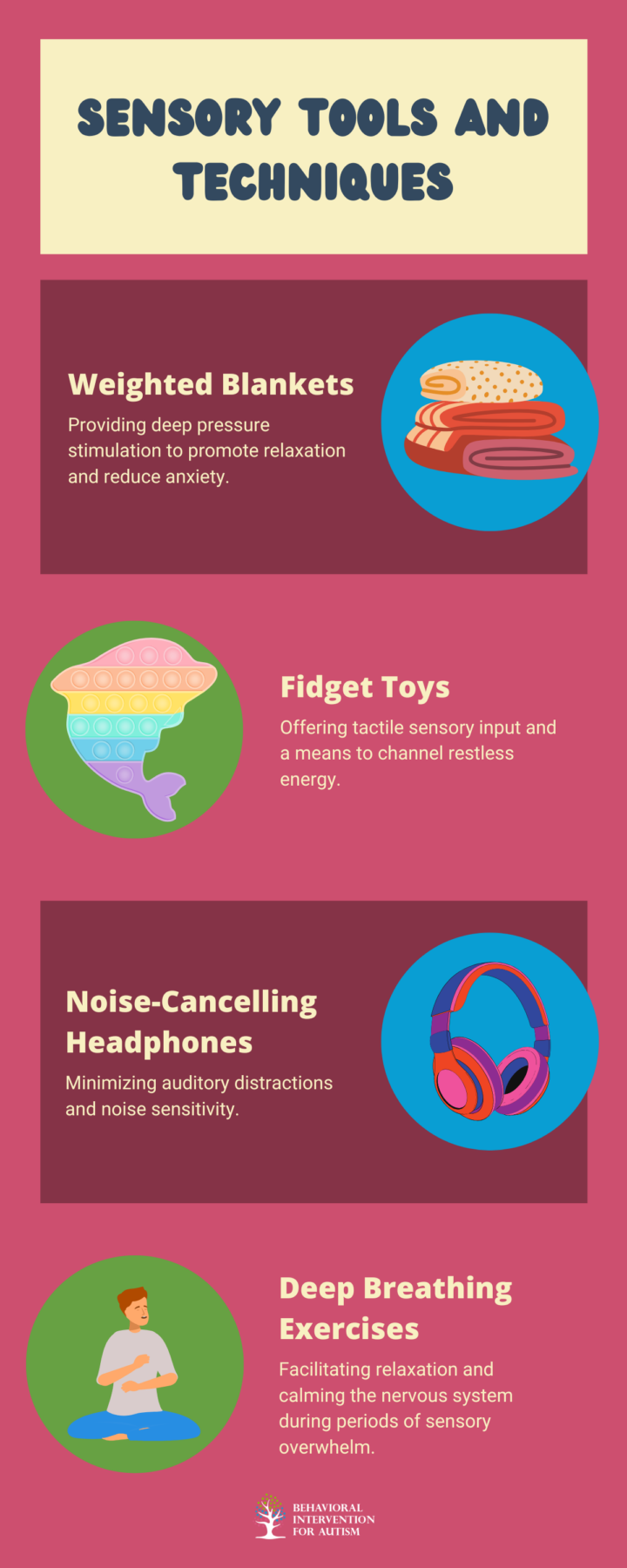
Table of Contents
Sensory overload, particularly prevalent in individuals with sensory sensitivities like those with autism spectrum disorders or sensory processing disorder, can be an overwhelming experience if not managed effectively.
Understanding the definition and causes of sensory overload, along with its impact on individuals with autism, is essential for providing appropriate support and coping strategies.
Definition and Causes of Sensory Overload
Sensory overload occurs when the sensory input a person receives becomes too much for their nervous system to process. This overload can be triggered by excessive or intense stimuli such as sounds, lights, textures, smells, and social interactions. Individuals with autism spectrum disorder, in particular, are more likely to experience sensory overload due to heightened sensitivities to certain stimuli compared to their neurotypical peers.
One key aspect of sensory overload is the difficulty in filtering or organizing sensory information, leading to an overwhelming sensation that can result in stress, anxiety, and meltdowns. Children with autism may find certain sensory inputs, like specific textures or loud noises, particularly distressing, further exacerbating their sensory overload experiences.
Impact on Individuals with Autism
For individuals with autism, sensory overload can have a significant impact on their daily functioning and quality of life. The overwhelming nature of sensory overload can lead to challenges in regulating emotions, engaging in social interactions, and focusing on tasks. Children with autism may exhibit behaviors such as crying, shaking, or withdrawing from the environment when experiencing sensory overload.
The impact of sensory overload is not limited to children – adults with autism spectrum disorder also face challenges stemming from sensory sensitivities. Coping with sensory overload is crucial for individuals with autism to navigate their surroundings effectively and engage in daily activities without feeling overwhelmed or distressed.

Coping Strategies for Sensory Overload
Sensory overload, particularly common in individuals with sensory sensitivities like autism spectrum disorders or sensory processing disorder, can lead to stress, anxiety, and meltdowns if not addressed effectively.
Coping with sensory overload involves environmental adjustments and the utilization of sensory tools and techniques to create sensory-friendly environments and enhance coping mechanisms.
Environmental Adjustments
Creating sensory-friendly environments, both at home and in educational settings, is essential for managing sensory overload in individuals with sensory sensitivities such as autism spectrum disorders. Environmental adjustments can significantly impact the individual’s ability to regulate their sensory experiences and reduce overwhelming stimuli.
Environmental Adjustment | Description |
Decluttering Space | Minimizing visual distractions and creating organized spaces. |
Providing Quiet Zones | Establishing areas free from loud noises or excessive stimuli for relaxation. |
Regulating Lighting | Adjusting lighting levels to reduce glare or harsh lighting that may trigger sensory sensitivities. |
Using Visual Supports | Incorporating visual schedules or cues to enhance predictability and decrease anxiety. |
Implementing these environmental adjustments allows caregivers and educators to support individuals with sensory sensitivities in navigating their surroundings and reducing sensory overload.
Sensory Tools and Techniques
In addition to environmental modifications, providing individuals with sensory tools and teaching coping techniques are crucial aspects of managing sensory overload effectively. These tools and techniques aim to empower individuals to self-regulate their sensory experiences and navigate overwhelming situations.

Offering a variety of sensory tools and techniques tailored to individual preferences allows caregivers and educators to effectively support individuals with sensory sensitivities. This approach helps manage sensory overload and promotes a sense of calm and comfort in challenging environments.
Managing Sensory Overload
Managing sensory overload is vital for fostering comfort and well-being in individuals on the autism spectrum. Effective coping mechanisms can significantly help them navigate sensory challenges more easily.
Two key strategies will be explored: deep breathing exercises and a trauma-informed approach.
Deep Breathing Exercises
Coping with sensory overload can be enhanced by incorporating deep breathing exercises into one’s routine. Techniques such as 3-3-3 breathing, a variation of box breathing (4-4-4-4), can be particularly helpful in regulating overwhelming sensations, slowing down the experience, and aiding in resetting and reevaluating the situation.
Deep breathing exercises encourage individuals to focus on their breath, creating a calming effect that can help alleviate feelings of distress or anxiety associated with sensory overload. By practicing deep breathing techniques regularly, individuals can build resilience and improve their ability to manage sensory challenges more effectively.
Creating a safe and supportive environment is essential for guiding individuals through deep breathing exercises. Incorporating these exercises into a daily routine or using them during moments of heightened sensory input can significantly enhance relaxation and mindfulness. Deep breathing serves as a powerful coping strategy for managing sensory overload.
Trauma-Informed Approach
Taking a trauma-informed approach to managing sensory overload is vital in recognizing and addressing the potential impact of overwhelming sensory experiences on individuals with autism. Sensory overload can trigger a chain reaction that intensifies feelings of overwhelm until they become unmanageable, sometimes leading to panic attacks if left unaddressed.
Adopting a trauma-informed perspective enables caregivers and professionals to create a nurturing environment that respects individuals’ sensory needs. This approach involves understanding the causes of sensory overload and responding with empathy, patience, and tailored support to help individuals better regulate their sensory experiences.
Implementing a trauma-informed approach may involve creating sensory-friendly spaces, providing sensory tools and resources, and fostering open communication to address sensory triggers effectively. By prioritizing the emotional well-being and sensory comfort of individuals with autism, caregivers and support networks can empower them to navigate sensory overload more successfully and build resilience in the face of challenging situations.

Seeking Professional Help
Individuals experiencing sensory overload, particularly those with autism, may benefit greatly from seeking professional assistance to manage their sensory challenges effectively. Two key avenues of professional help include occupational therapy guidance and the availability of support services tailored to their needs.
Experiencing sensory overload can be overwhelming for individuals with autism, making it essential to develop effective coping skills. Techniques such as deep breathing, mindfulness, and creating a calm environment can significantly help in managing these intense moments. We understand that every individual’s needs are unique, which is why our ABA programs in Florida are tailored to provide personalized support.
Behavioral Intervention for Autism is dedicated to equipping families with strategies and resources that foster resilience and independence. If you’re seeking guidance or wish to explore how our programs can make a positive impact, connect with us today. We’re here to help!
- 9 Common Obsessions of Children With Autism You Should Know - February 25, 2025
- What is Neurodiversity? A Guide to Embracing Differences - February 25, 2025
- Understanding Hyperfocus in Autism: What It Means and Why It Happens - February 25, 2025
